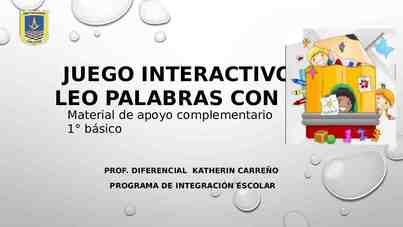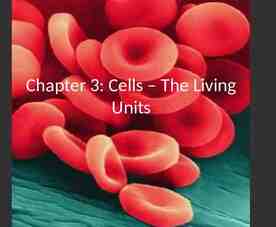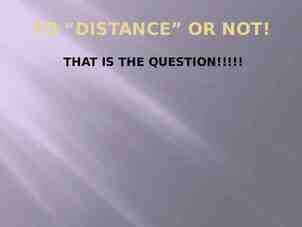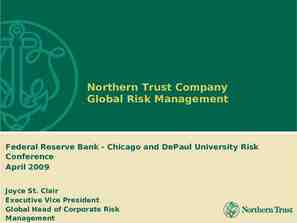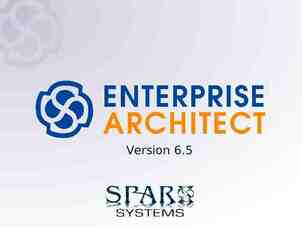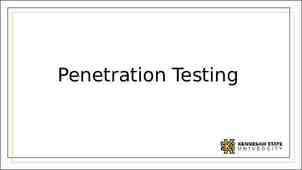WIOA Training Academy Data Validation Documentation Training
42 Slides796.68 KB

WIOA Training Academy Data Validation Documentation Training Sandy Monaco & Heather Pipkin & James Moss TEAMS February 10, 2022; 10:00–11:30am Data Validation to Document: 1) Skills Progression MSG #1810 and 2) Type of Credential & Date #1800/#1801 1

Other Information Added to Training There will also be some information that is not documentation related. It will be about entering MSGs into AJL. 2

Purpose of Training This training is to answer questions about documenting: 1) Skills Progression MSG #1810. 2) Credential Type and Date #1800 and #1801. This is not a training on performance measures. Some staff may assume the only document that can be used as documentation for Skills Progression and for Type of Credential & Date is a credential such as issued by a college, a license or high school diploma. That is not true. Other types of docs are available. 3

Skills Progression Definition #1810 1) Most recent date the participant successfully passed an exam that is required for a particular occupation, or 2) Progress in attaining technical or occupational skills as evidenced by trade-related benchmarks such as knowledge-based exams. Truck driving fits this definition. Diesel Driving Academy (DDA) in Little Rock will be used as an example for this training. 4

Diesel Driving Academy Student Evaluation Report This is an example of DDA’s Student Evaluation Report. We are not saying that all documentation must look exactly like this. This is an example. 5

Skills Progression definition has two parts: #1 & #2. Both are about an exam. Four types of documentation are allowed. Only the 4th is a credential. NOTE: Definition number on left does not necessarily correspond to documentation number on right Skills Definition - DEV TEGL 23-19 Documentation Items – DEV TEGL 23-19 1. Most recent date the participant successfully completed 1. Knowledge-based exam results or certification of completion. (Certification of completion of exam; not the completion document). an exam that is required for a particular occupation. OR 2. Progress in attaining technical or occupational skills as evidenced by trade related benchmarks such as knowledge-based exams. NOTE: The date of MSG attainment is what is to be documented. Therefore, all documentation must have the date the MSG was attained. (Example: copy of exam results with passing grade – exam given for specific occupation during course of training.) 2. Documentation demonstrating progress in attaining technical or occupational skills through an exam or benchmark attainment. (Example: student evaluation report similar to Diesel Driving Academy with benchmarks & grades.) 3. Documentation from training provider or employer. (Examples: training provider/employer statement, email or doc, with passing exam results naming the occupation or the benchmark attainment, date of exam, or something like the Student Evaluation Report example from Diesel Driving Academy, or some other similar document from provider.) 4. Copy of a credential that is required for a particular occupation and only is earned after the passage of an exam. (Examples license, degree.) 6

Documentation of Skills Progression There are four types of documentation for Skills Progression. When validating Skills Progression, remember that it is not the type of document that is validated (such as a license); it is the DATE of the attainment of the MSG that is being validated. So, the date must appear on the document, and it must agree with the attainment date entered in AJL on the MSG page. Remember that only one of the four documentation items (#4) documents Skills Progression by using a credential. You may not be able to get a copy of a credential. 7

Documentation of Skills Progression (con’t #2) Documentation item #1 (see chart above slide #6). Exam results or a certification of completion. This does not mean the completion document that participants receive when they finish a class and complete a certain number hours of class time. Instead, this means a document verifying they completed the exam. Local Areas will have to discuss with training providers what type of document they can offer containing the necessary information. In some cases, it may be an email from the provider discussing exam results, passing grade, benchmarks such as Backing Maneuvers, the date of the exam. 8

Documentation for Skills Progression (con’t #3) A truck driving school may not offer participants a written exam for a benchmark such as backing maneuvers. Instead of a written exam it may be an exam where the participant actually demonstrates skill to back up and maneuver the truck. Remember that all training providers do not operate the same. There may be differences between providers and different occupations. 9

Completion Document for (number of hours in class) #1332 Participated in Postsecondary Education During Program Participation Adults / Dislocated Workers / Youth / Dislocated Worker Grants A completion document can be used for this element. File Doc with Case Notes School Records 10

Benchmarks/Skills for Truck Driving from Diesel Driving Academy in Little Rock Information from the Student Evaluation Report Course Introduction to Trucking Log Books Vehicle Inspection Competency Development Backing Maneuvers Vehicle Maneuvers Start 4/26/21 4/26/21 4/26/21 4/29/21 5/3/21 6/15/21 End 4/28/21 5/21/21 5/21/21 5/3/21 5/11/21 6/18/21 Grade P P P P P W 11

Review of Diesel Driving Academy Benchmarks Exams for each of the 6 benchmarks (slide 11) Each one of these 6 benchmarks is a Skills Progression. One skill attainment will count in the MSG performance measure per PY. If the participant signed up for truck driving in late June and training continued to the next program year into July, then they can obtain this skill for the first PY and another skill for the second PY. 12

Review of Diesel Driving Academy Benchmarks (con’t #2) Notice that the grade for Vehicle Maneuvers is “W”. The participant withdrew from training. Skills Progression did not fail just because a license was not awarded. Five documented benchmarks for Skills Progression were attained prior to withdrawal. 13

High School Population Skills Progression MSG does not apply to the majority high school population taking general education classes. Those students do not fit the Skills Progression definition. o They are not passing exams for particular occupations. o They are not progressing in attaining technical or occupational skills by trade related benchmarks – knowledge-based exams. Transcript/Report Card and Educational Functioning Level would be more appropriate MSGs for this group. 14

High School & College Population A high school student could be in auto body class at the local college. That is OK for Skills Progression if the definition is met. All college students will not be in Skills Progression. Review their classes. Maybe they are only in general education. 15

GED GED class does not fit the definition for Skills Progression. 16

Examples of Other Occupations Phlebotomy does not require a license. That does not mean the participant cannot be in the Skills Progression MSG. The participant may earn Skill Progressions if they fit the definition by passing an exam or show progress in attaining skills. A license is required as a credential for welding. If the participant does not obtain a license, that will not stop them from attaining a Skills Progression if there are exams/benchmarks. This is an example of CNA testing by a training provider in NW. “It is a course like any other. They have chapter tests, a final, projects and clinicals. All receive grades. If they do not pass with a 70%, they do not receive a certificate and cannot sit for state exams.” Local Areas will have to figure out how this fits in with Skills Progression. Discuss doc with the CNA provider. 17

Set but not Attained The picture above is a participant record from an AJL. She completed CNA training but did not get a license. The Local Area entered “not attained” because she did not obtain a license, therefore, failing the Skills Progression measure. However, the other documentation items for Skills Progression could have produced an attainment. 18

Documentation For Type of Credential & Date #1800 & #1801 NOTE: This PPT training is not a training on how to attain the credential performance measure. It is about documenting #1800 & #1801. For these PIRL elements the type of credential earned, and the date of that credential are to be documented. Examples of types of credentials are high school diploma/GED, degree, or license. A document that is a completion document, such as a Certificate of Completion, Certificate of Achievement, or Certificate of Training, stating the student completed a certain number of hours, is not a credential that can be used for the Skills Progression or for Type of Credential. 19

Documentation Items for Type of Credential & Date #1800 & #1801 There are 4 items to document these elements other than a credential. You may not be able to get a copy of a credential. Whatever doc is used, the doc must contain the type of credential earned & date. 1. 2. 3. 4. Data Match Credential School record (Example: Transcript/Report Card) Follow-up survey from participant. Record in case notes. (Phone or email survey – upload & type case note in Uploader.) 5. Case notes documenting information obtained from education or training provider. (Phone or email statement – upload & type case note in Uploader.) 20

4th Quarter Credential Outcomes Data entry in AJL There are participant records in AJL where a completion document is incorrectly entered in 4th quarter Outcomes as an Occupational Skills Certificate for the 1st credential and then a license entered for the 2nd credential. Do not record completion documents in Outcomes. They are not credentials and if they are in Outcomes, they will be reported on the PIRL as a credential. 21

PIRL(DOL) Collects Credential Data The PIRL collects data for 3 credentials. In the pictures below a Local Area recorded a completion document as the 1st credential earned and the license was entered as the 2nd credential earned, and then a 3rd credential was entered. These were reported on the PIRL as 1st, 2nd & 3rd credentials. The state reported incorrectly on the PIRL because the 1st credential is not a credential. 22

TEGLs: Completion Documents not Allowed Completion documents do not meet the requirements to document a recognized credential. References: Department of Labor TEGL 10-16, Change 1, TEGL 15-10 and TEN 25-19. Trainings where completion documents are often awarded are CNA, truck driving, and welding especially when training is provided by a private school. 23

College Certificates Used as Doc Some two-year colleges offer documents such as a Certificate of Proficiency or a Technical Certificate. These are credentials that are different from a completion document. There are particular requirements that apply to obtaining a college credential: earning credit hours, maintaining a certain GPA, having a curriculum that is approved by the Higher Education Coordinating Board. These credentials are not issued for seat time in class. 24

Additional Information The following slides are not documentation related but are important enough to include in this PPT. 25

All ISY Must have an MSG All in-school youth (ISY) are included in the measurable skill gains. Includes high school and post-secondary youth. All ISY must have an MSG set. For high school youth the service “Instruction Leading to Secondary School Completion” must be on S&T, must be marked “yes” for leads to a credential, and diploma, employment and measurable skills gain must be checked. Why add this service to the S&T: You must have training to be in MSG. This service is a training service and therefore sets the participant to be in MSG. DOL has determined that a high school diploma leads to employment. 26

If no MSGs are set, will the Participant be in the MSG Performance Measure? Yes, the participant will be in the DEN. 1. To be in the MSG DEN the participant has to have training on the S&T and the question, “Does this service lead to a credential, employment, or measurable skills gain?” must be “yes”. 2. Just because you do not enter an MSG in AJL it won’t keep them out of the denominator. 27

How Does the Participant get in the MSG NUM? To be in the numerator 1. Must be in the DEN and 2. Have an attained MSG on AJL MSG page during the same PY that it was set. 28

Should Unattained MSGs be Closed at the End of a PY? Some Case Managers set an MSG and the participant is not able to attain it during that PY – maybe there is not time to get it done. So, at the end of that PY they close the MSG with “not attained” and then open it again for the next PY. The participant will be in the DEN for the initial PY. If the MSG was not closed at the end of the PY but left open into the new PY, the participant will still be in the initial PY DEN. An attainment during the second PY will not affect the initial PY. This can be done either way but obviously there is more work by closing at the end of the PY and reopening. 29

Opening Two of the Same Type of MSG Example, you may set an EFL during the PY and the participant does not attain so you mark not attained and they will be in the DEN. Then you open a second EFL during the same PY and the participant does attain during the same PY so you mark it attained. They will be in the NUM for that program year. NOTE: You are able to open two MSGs of the same type during the same PY as long as they are not both “open”. One has to be “attained” or “not attained”. 30

MSGs Included in Performance and in Skills Count A skill is opened during the PY and the participant attains so you mark it attained. Then you open a second skill of a different type during the same PY and they attain. Only one will be in performance. Both attained skills will go into the Annual report. One will be used for the MSG performance measure and the other will be used in the MSG counts at the bottom of the report. The bottom part of the report contains a count of skills that are attained during the PY but counts only one of each kind. 31

This is the MSG count section of the Annual Report. One MSG is counted in each type. 32

Will the Participant Continue to be in the DEN if they Complete Training? If the participant is in training during a PY and completed the training during that PY but did not exit, they will not be in the MSG performance measure the next PY if they do not have training on the S&T. 33

Entering Data in AJL and Documenting Skills Progression & Credentials 1. Do not record completion documents in AJL in the Fourth Quarter Outcomes #1800; #1801; #1802; #1803; #1804; #1805 2. Do not record an attainment of a Skills Progression MSG #1810 in AJL on the basis of completion documents. 3. Do not upload completion documents in the AJL Uploader for Type of Recognized Credential or Date #1800; #1801; #1802; #1803; #1804; #1805. 4. Do not upload completion documents in the AJL Uploader for Skills Progression MSG #1810. 34

Homework 1. It is strongly suggested that each person review this PPT at least one time. 2. Each Local Area must review this information with appropriate staff. 3. The training today should not be the only training provided. Please begin using these guidelines immediately. Review current participant records in AJL and modify where possible. 35

NOTE: All MSGs must be included on the IEP/ISS (Issuance 19-08, Change 2) This training PPT can be found at the following address: www.Easternworks.org Click on Training 36

FUN FACT GUESS WHO was inducted in the National Baseball or Softball Hall of Fame. 37

ELROY WILLOUGHBY Program Operations Chief 38

Beverly Lovett Assistant Deputy Director, Office of Employment Assistance 39

Chad Brown AWDB Director 40

National Softball Hall of Fame Are you ready? 41

Beverl y Lovett 42

